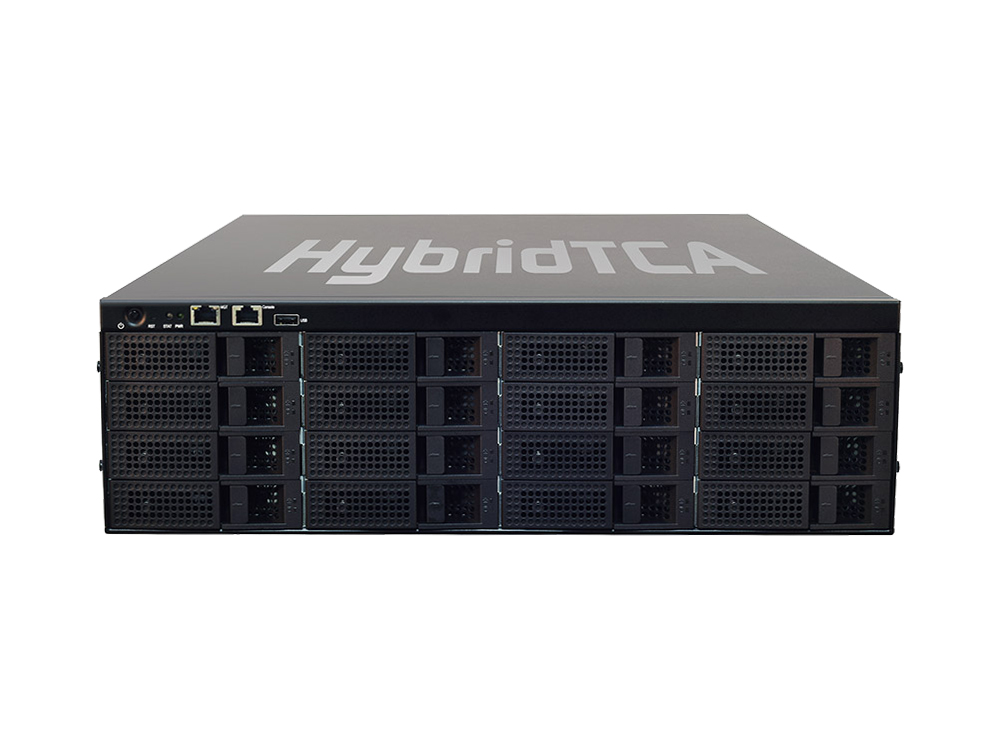Since 2016, Hyperconverged Infrastructure (HCI) has been one of the fastest-growing technologies, from a US$ 2 billion market to US$ 5 billion in 2019 according to research by Gartner. It is anticipated that majority of data centers worldwide will adopt HCI by 2020. With HCI hypervisor, IT management can integrate and virtualize networking, computing and storage into one single infrastructure to simplify today’s data center orchestration and improve flexibility. Under HCI infrastructure, a white-box server is “converged” with multiple virtual machines which share the same hardware resources, like CPU, DRAM and SSD, to execute networking, computing and storage. In this case, orchestration and storage are software-defined and virtualized on a open hardware platform.
The reasons behind the rapid growth of HCI are flexibility and reduced maintenance efforts. In the past, data center management is highly complex, as IT staff has to rely on proprietary vendors in repair, maintenance and upgrade. In fact, upgrades in hardware, software or firmware requires specific deployment methods from vendors and it can be highly time-consuming and create cost burdens. However, fast-response to market demands is critical in today’s cloud computing, particularly when it comes to quality of service and user experience. Thus, HCI allows IT management to have the agility and flexibility in the management of their data centers without relying on proprietary vendors.
HCI and MEC
On the other hand, MEC (multi-access edge computing) has been the buzzword to go with 5G. As observed, edge computing cut down the latency of cloud computing by enabling processing power, connectivity and analytics at the edge, and MEC expands the idea of edge computing, by building large number of sites. Therefore, HCI can help accelerate the MEC deployments.
First, HCI is highly fast-deployable, which meets the basic requirements of MEC, with hundreds of edge implementations. Besides, HCI offers a pool of shared hardware resources for compute, network and storage, and this helps accelerate MEC deployments without repeating all the hassles in hardware or software setup.
Secondly, HCI can protect data for MEC. For example, in the case of autonomous vehicles, massive volume of data is generated. With HCI, the data storage is software-defined and virtualized. Even when a hard disk replacement is taking place, the data still remains. In addition, security algorithms can be implemented across the storage media.
Third, the virtualized and software-defined nature of HCI makes it scalable and flexible to accommodate future hardware upgrades in CPU, memory, storage and networking components. In this case, it is future-proof.
Lastly, HCI can integrate and run multiple virtual machines so that new applications and services can be implemented in a shortened development time. This is important for MEC as user demands change from time to time.
HCI and 5G
The beneficial elements of HCI can help accelerate the deployments of MEC and thus indirectly shorten the process to 5G. However, there are more of 5G to be realized. While HCI simplifies complexity and improves management for enterprise data centers, 5G also has to address consumer aspects and even our day-to-day user experience. Therefore, it is anticipated that 5G will need both HCI and MEC to fully realize its potential.
Recommended Solution
As discussed earlier, Hyperconverged Infrastructure is about resource pooling for multi-node compute and running virtual machines with hypervisor. Therefore, the “white-box” hardware must be a high-throughput and high-performance platform to accommodate HCI operations. For example, the HTCA-6310S of HybridTCA server series from Lanner, is an optimal HCI data centers.
Empowered by high-performance CPUs, memory and high-density storage, HTCA-6310S can be linked with up to 400 in-vehicle computing systems simultaneously to perform IP camera surveillance and real-time communication through 4G LTE networks and GPS tracking, which means it can work with 400 fleets within the city via defined protocols. HTCA-6310S is a 3U storage server powered by dual Intel® Xeon® E5-2600 v3/v4 Series CPUs and up to 16x DDR4 R-DIMM. With up to 16 hot-swappable 3.5” storage bays, HTCA-6310S functions as hyper-converged data center storage server for the massive data generated by next-generation vehicle applications, such as data analysis engine, driving record database, boarding record database and geographic information system.
Featured Product
HTCA-6310S
3U Hyper-converged x86 Storage Server Appliance with 16 x 3.5” Drive Bays
| CPU | Intel® Xeon® processor E5-2600 v3/v4 Series |
| Chipset | Intel C612 Chipset |
Read more







